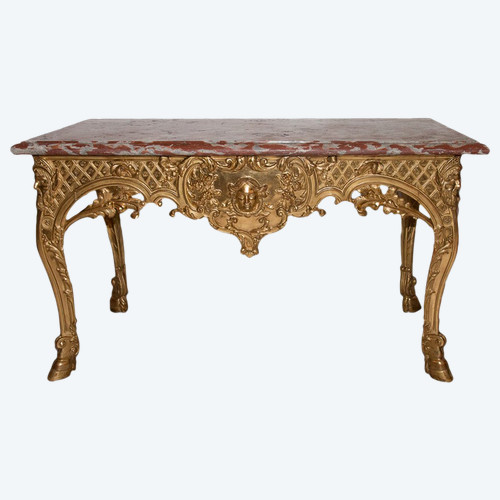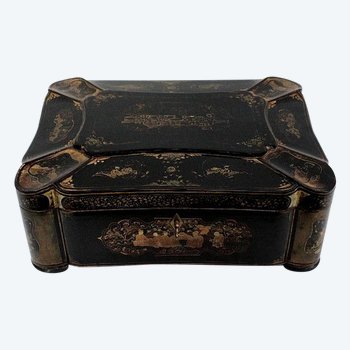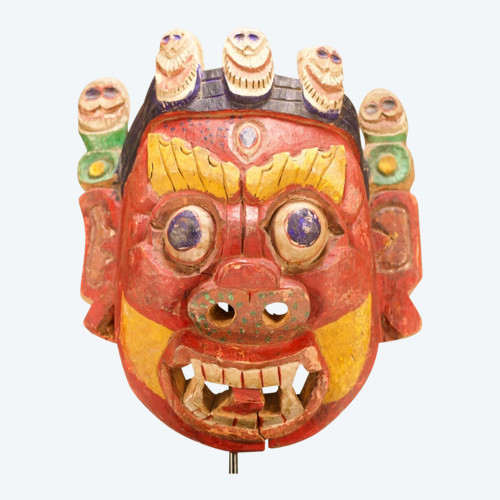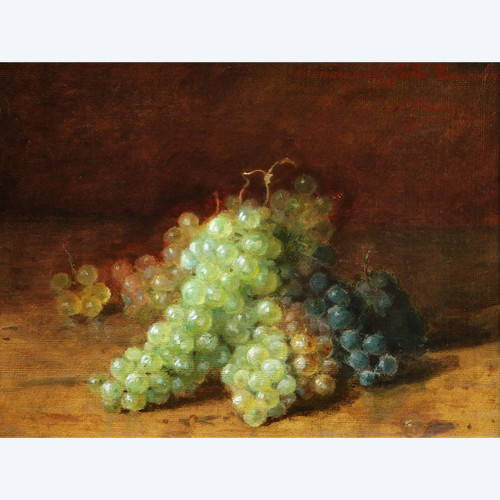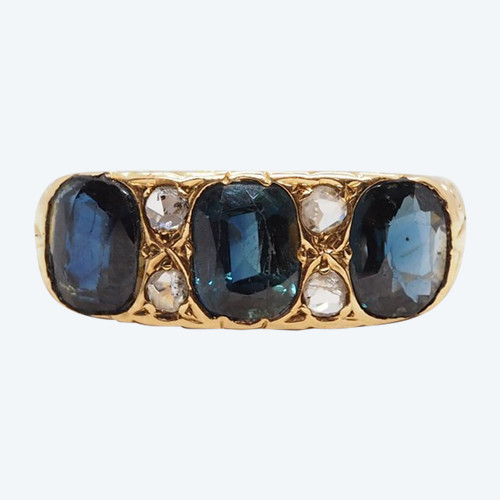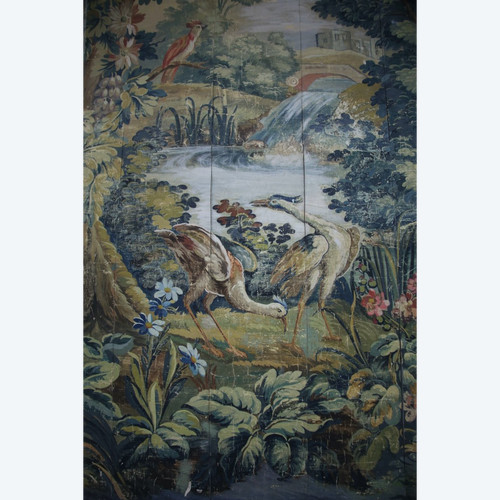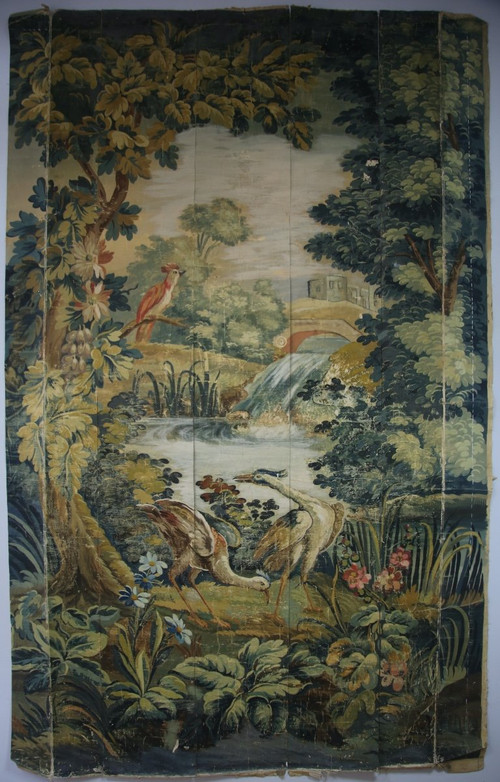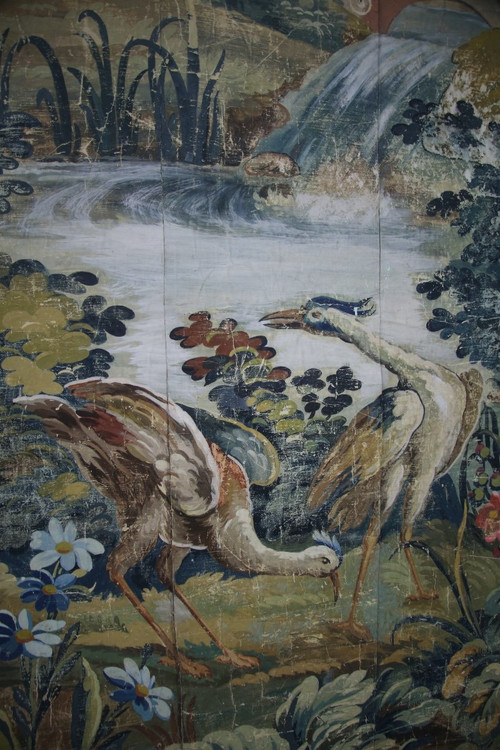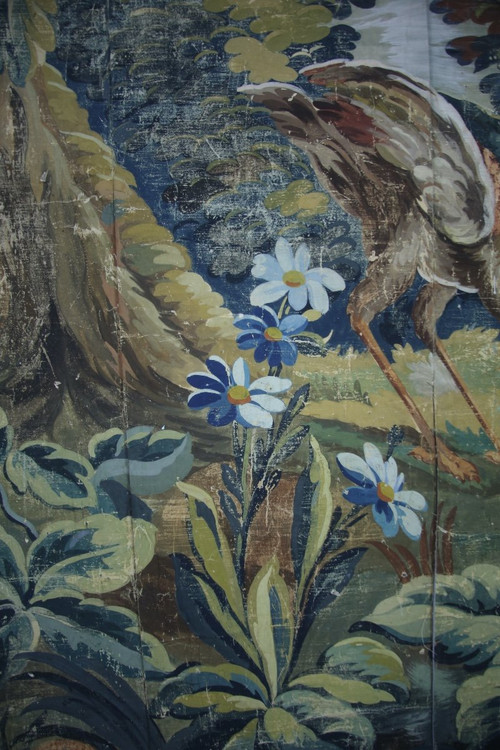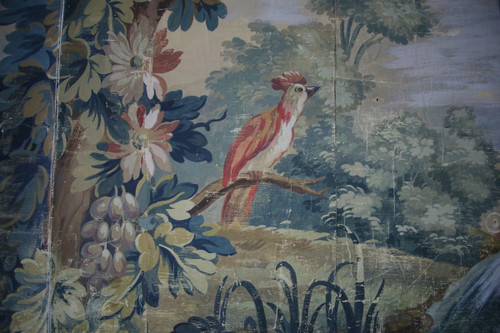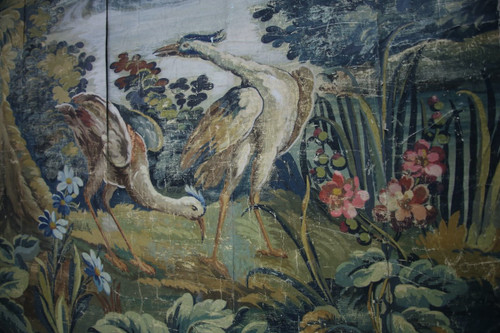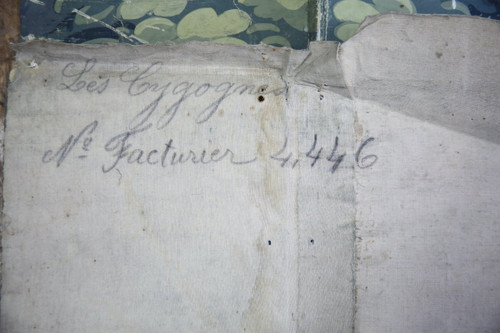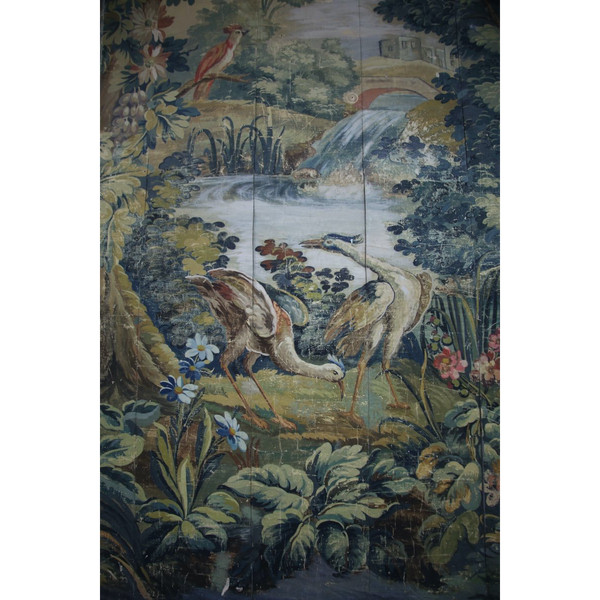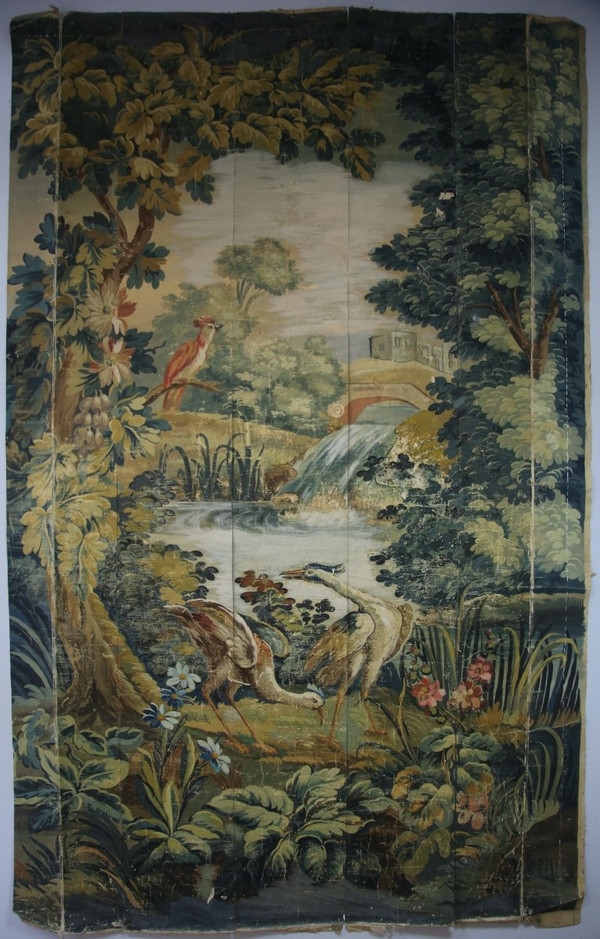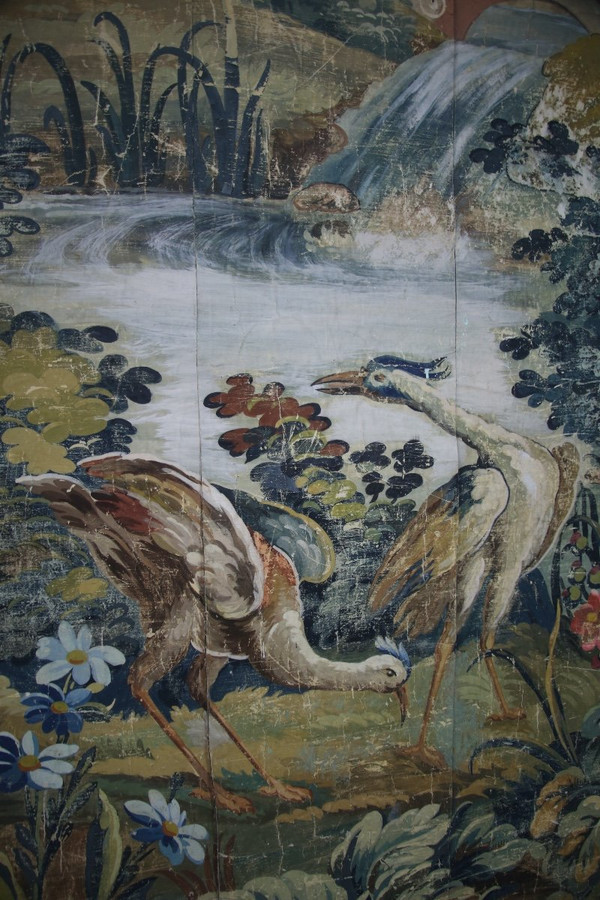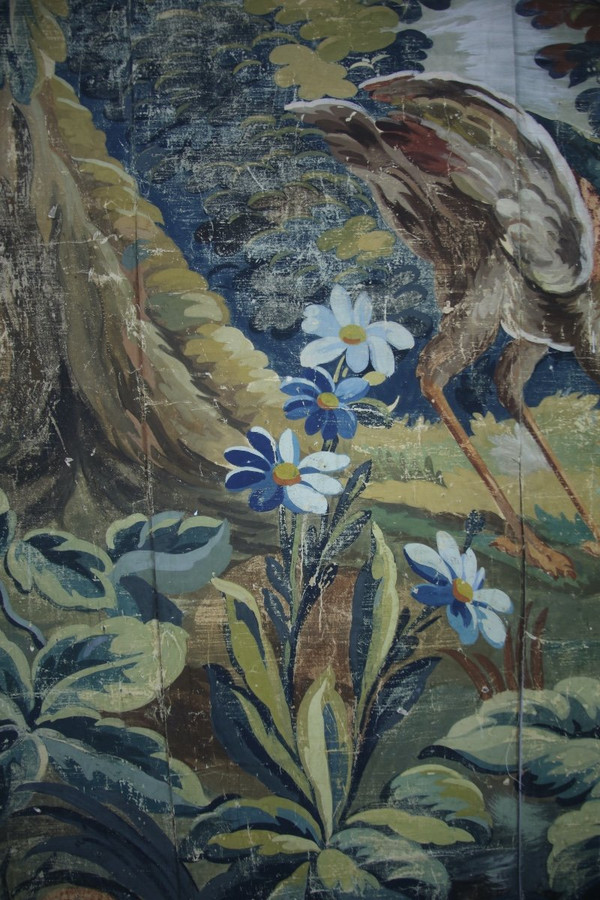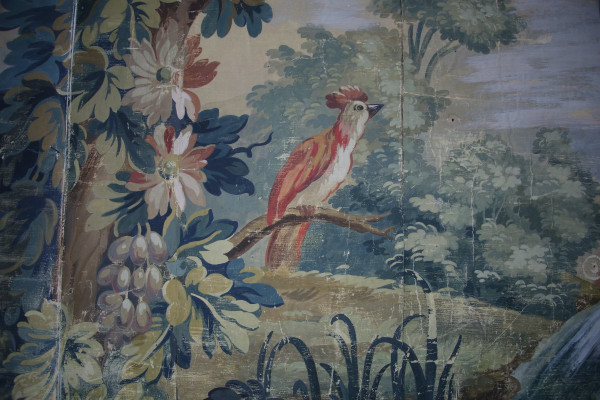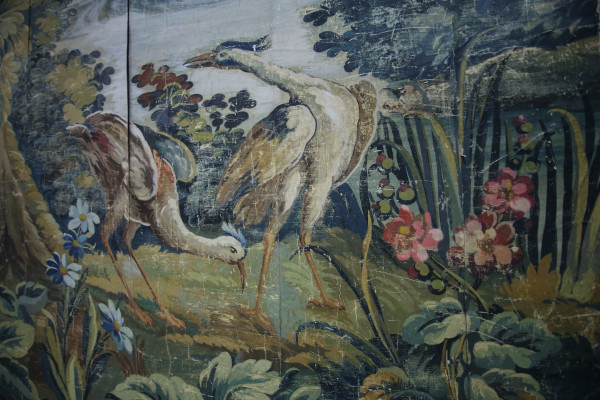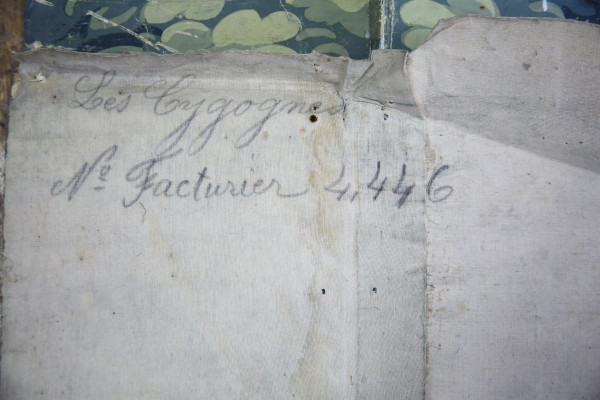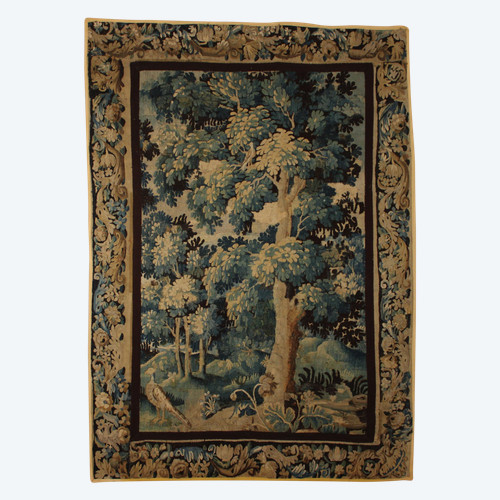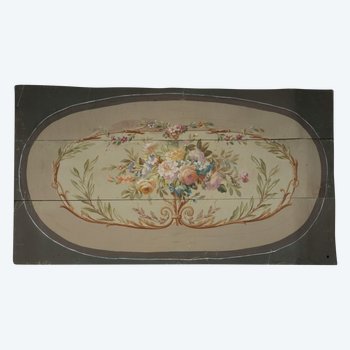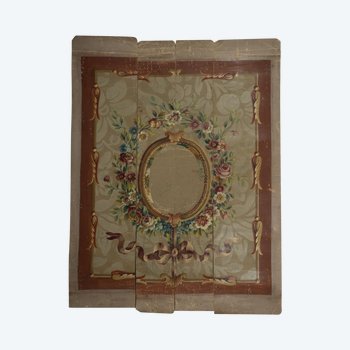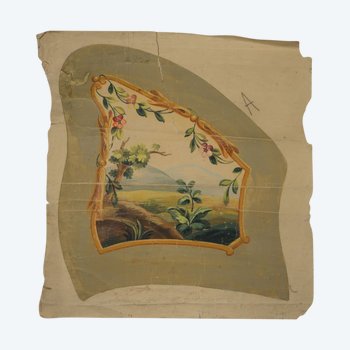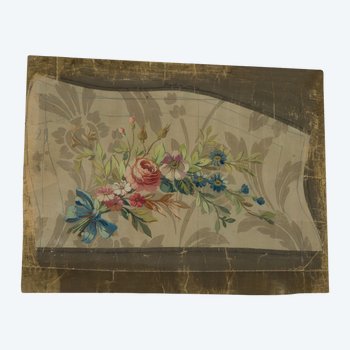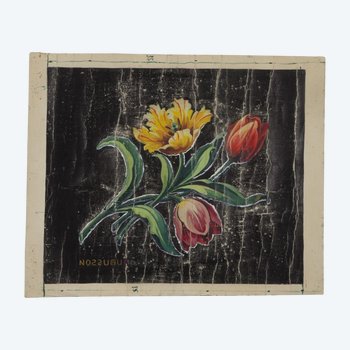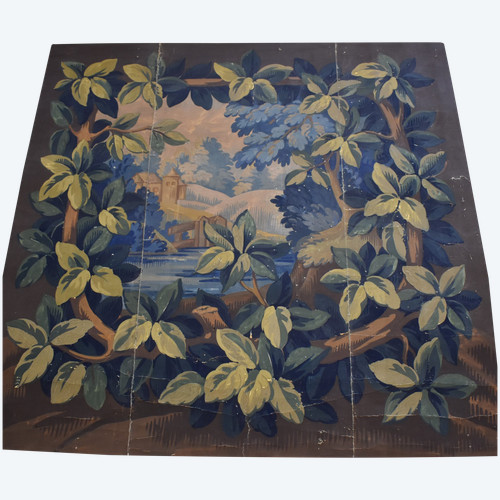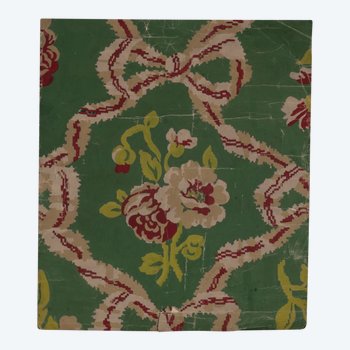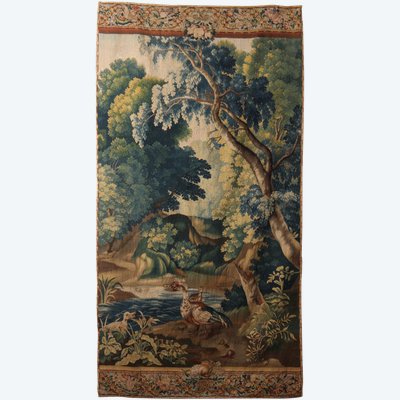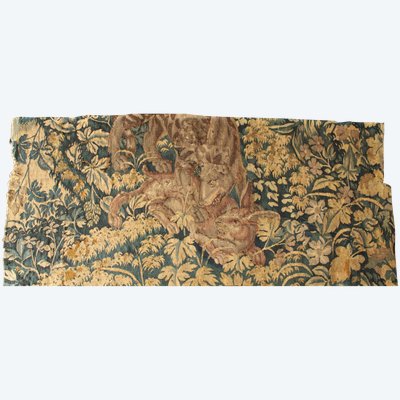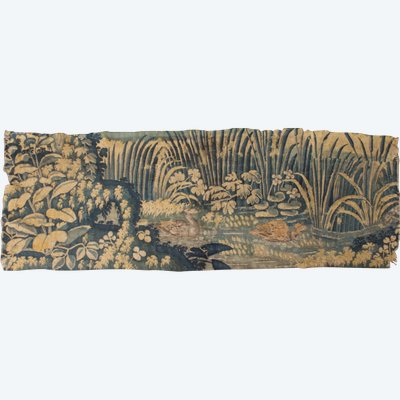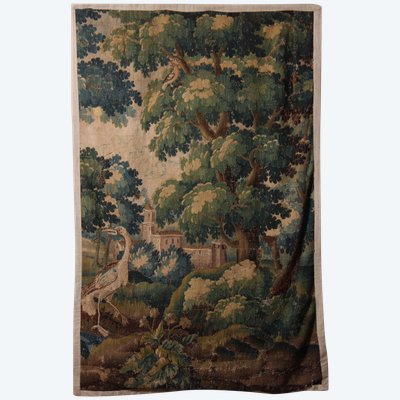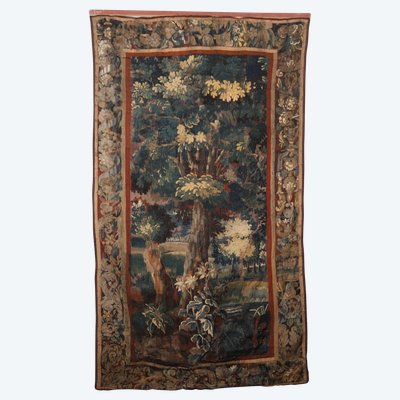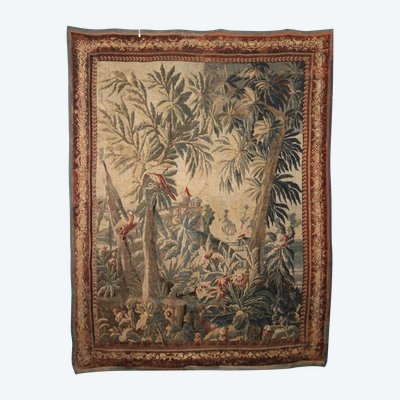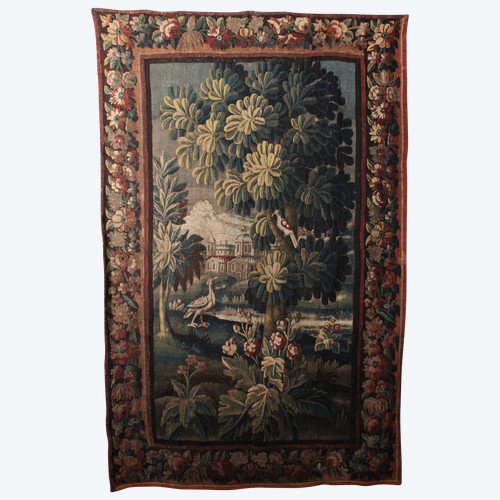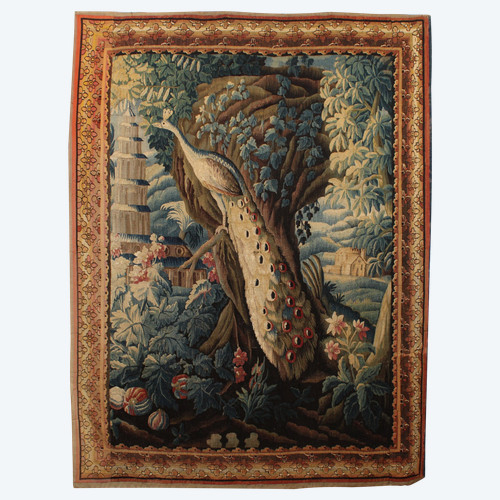This description has been translated and may not be completely accurate. Click here to see the original
Cardboard used as a full-size model for weaving greenery, cut into 5 strips. Each strip is numbered on the reverse at the top, with the 5th and last strip inscribed "Les Cygognes - N° Facturier : 4,446".
-True to the tradition of Aubusson greenery, this verdant landscape features several birds in a natural setting: two wading birds, including a heron in the foreground, and a bird perched on a tree branch on the left. The background is enhanced by a stretch of water fed by a small waterfall. In the distance, a bridge and a few buildings complete this picturesque landscape, adding depth.
-Technique: oil paint on canvas
-Overall dimensions: 1.23 m (width) x 2.45 m (height)
-Wear and craquelure are to be noted.
The carton is the full-scale model from which the weaver creates a tapestry. Placed under the loom, it guides the weaver during the weaving process. Cartoons are created by specialists, the cartonnier painters.
A true link between the artist and the weaver, one of the particularities of the cartonnier's work, subject to the constraints of weaving, is to transpose onto a "cardboard" support (rag paper, later thick paper and then canvas) a work imagined on a small-format model by an artist.
To do this, the cartonnier enlarges the motif to scale, according to the size required for the tapestry, while at the same time reworking the motif so that it can be easily translated into tapestry by the weavers. It's not an established painting with all the freedom of plastic expression that an artist can use when painting a picture. The cartonnier must impose certain constraints on himself, depending on the particular technique of tapestry, which uses a textile raw material (wool and/or silk). Shapes must be painted with precision: the different color zones must be clearly delineated.
As cardboard is a working tool, it is often cut into vertical strips to facilitate horizontal weaving. In addition, paints are often damaged for weaving purposes (cut, cracked, pinholes...). As a result, the success of a tapestry design can be measured by the wear and tear of its cardboard.
After the closure of many factories and workshops, from 1985 onwards, these painted works left the workshops to be dispersed on the art market. Today, they are regularly used as wall decorations.
Ref: AOV4YWL15W
 Garter Ring In Gold Sapphires And Diamonds
1.190 € EUR
Garter Ring In Gold Sapphires And Diamonds
1.190 € EUR

